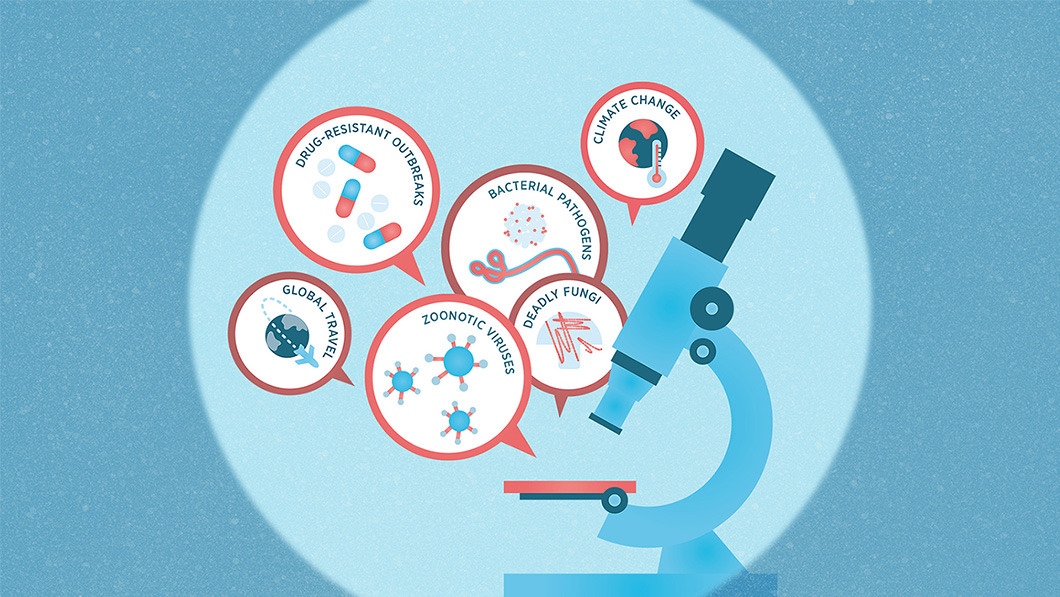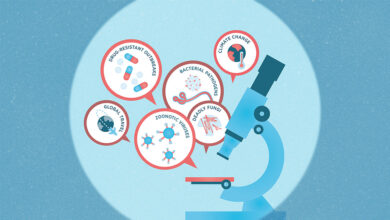
An alarming H5N1 report and a DIY bioweapon
Sponsored by:

PPF: Health Security
PPF’s report The Next One: Preparing Canada for another health emergency outlines the lessons learned from the pandemic and how Canada can safeguard against future health emergencies. To keep the discussion going — and to keep Canadians informed — this newsletter looks at what’s happening in the world of health security each week. Here’s what we’re following:
H5N1 on the move
A new study suggests tens of thousands of elephant seals died of avian flu in South America between 2022 and 2023 because the virus found a way to spread from one mammal to another. The findings, which have yet to be peer-reviewed, would be the first documented evidence that H5N1 could potentially spread in the same way between other mammals, including humans. In total, the researchers found that the virus contained 18 mutations that made it capable of infecting mammals – a number that some experts have found surprising and worrisome.
The study, whose lead author is the director of the Latin American wildlife health program at the University of California, Davis, also found that H5N1 jumped at least three times from wild birds to marine mammals on the Pacific Coast of South America, and subsequently evolved to spread among seals – a total of 30,000 died. The research team also reportedly found evidence that the virus went from the seals back to birds – they found the identical virus in terns, a relative of the gull, suggesting that the birds could then carry the mutated virus further afield.
In the U.S., the Department of Agriculture has reported that 11 house mice in New Mexico were found to have been infected with H5N1. Given how close humans tend to live to mice, there’s concern that transmission could occur via their droppings or urine. “This brings the virus closer to human homes,” one expert told the Daily Telegraph. “It increases the risk of direct exposure and infection.”
Health data unlocked
Canada’s federal government has introduced a bill in the House of Commons that aims to make it easier for health data to be exchanged across health systems in Canada, for example between hospitals or provinces. The bill – the Connected Care for Canadians Act – would impose a requirement on vendors that any health information technology be interoperable. Canada’s Health Minister Mark Holland said the bill “will allow health-care professionals to deliver high-quality and coordinated care and make more informed patient decisions [and] help lay the foundation for a modernized, connected health system for all Canadians.”
Importantly, the bill would also outlaw data blocking – that is, any restrictions that prevent users from accessing and transferring their own health data. This can involve things as simple as immunization records and lab results.
Canada has recently been called out for its badly outdated data systems and lack of coordination. As PPF noted earlier this year in its report Unlocking Health Care, there is plenty of data, but “the pieces of countless medical puzzles remain mixed up in the box — too often a black box of paper notes and walled-off information.”
The Canadian Medical Association applauded the legislation. Access to personal health information “improves patient safety and patient outcomes by ensuring that providers have access to the right information at the right time when providing care,” it said in a statement.
Is it easy to make a bioweapon?
A team at MIT decided to test the guardrails on the synthetic gene industry to see whether they could order and receive all the genetic material they would need to recreate the 1918 pandemic flu virus, as well as the toxin ricin. Turns out: they could. They received 88 out of the 100 orders they placed. “Our results demonstrate that nearly all DNA synthesis screening practices employed in October 2023 failed to reject lightly disguised orders that could be assembled to produce viable select agents, including a pandemic virus,” they concluded, alarmingly. Does that mean that a rogue agent could do the same – that someone could easily create a bioweapon, just by ordering the right parts?
Maybe not. Many of the companies that fulfilled the orders recognized the customer. “An individual with legitimate purpose ordered DNA sequence that, by itself, posed no risk of misuse, for delivery to a company associated with legitimate scientific contributions studying the virus in question,” said a representative of the International Gene Synthesis Consortium, an industry group dedicated to screening synthesis orders. “The IGSC and its member companies remain dedicated to the responsible synthesis and use of nucleic acids,” the consortium wrote in a rebuttal to the MIT team’s findings. “The organization and its members will continue to collaborate to improve biosecurity screening practices and to ensure the use of synthetic nucleic acids remains safe.”
Dr. Google goofs
Google’s new AI Overviews search feature ran into a lot of problems very quickly, including in the answers it provided to basic health questions, according to an assessment by The New York Times. The paper pulled examples that AI Overviews provided to simple questions like “Is chocolate healthy?” revealing that, while the search feature returned information from some legitimate pages, it also pulled answers from places like a chocolate and gelato company’s website and a nutritional app that sells “gut intelligence tests” without being clear about the sources. Health-related searches could create confusion for users without more clarity about how Google’s tools distinguish between valid and invalid information, doctors told The Times.
READ MORE: How health misinformation is taking a toll on well-being
At the same time, AI has been shown to be more helpful in other areas of medicine. A new study from Stanford researchers has found that large language models (LLMs) can be better than human doctors at summarizing information from patients’ electronic health records. The team adapted eight LLMs to clinical text and tested their summarization skills against those written by human medical experts. They found that evaluators considered the summaries created by LLMs at least as good as the human ones 45 percent of the time, and “superior” 36 percent of the time.
One of the researchers’ worries was whether the LLMs would fabricate information. But the results were promising. “It turns out that humans also get things wrong sometimes and that the best model, while not perfect, produced fewer instances of fabricated information than even human medical experts,” said one member of the team. “Far from introducing inaccuracies, LLMs could actually end up reducing fabricated information in clinical practice.”
Another bird flu
Mexico reported the first confirmed human infection of a subtype of avian flu, H5N2. The WHO reported last week that a 59-year-old man died of the illness, though Mexican health officials later clarified his death was actually due to chronic disease.
Although the patient had no history of exposure to poultry or other animals, the WHO reported that he did suffer from other underlying conditions (chronic kidney disease, type 2 diabetes, and long-term systemic arterial hypertension), and had been bedridden for three weeks for unrelated reasons prior to contracting H5N2. Twelve people were in contact with the man, and seven had symptoms, but all tested negative for H5N2.
“The good news is that neither H5N2 nor H5N1 have demonstrated human-to-human transmission so far. However, this first case is a wake-up call,” Dr. John Brownstein, an epidemiologist at Boston Children’s Hospital, told ABC News.
Events
June
-
June 12-13: The Festival of Genomics & Biodata. Boston, MA
-
June 13-14: International Conference on Food Science and Biotechnology. Montreal, QC.
-
June 18-21: Global Health Security Conference. Sydney, Australia
-
June 20-21: 7th Annual Next-Gen Immuno-Oncology Conference. Boston, MA.
-
June 26-28: BioPharma Expo. Tokyo, Japan
-
June 30-July 3: European Congress on Biosecurity. Rotterdam, Netherlands.
July
-
July 24-28: Bio Asia Taiwan. Taipei, Taiwan.
Did someone forward you this newsletter? Subscribe to PPF: Health Security newsletter
This newsletter is produced by journalists at PPF Media. It maintains complete editorial independence.



